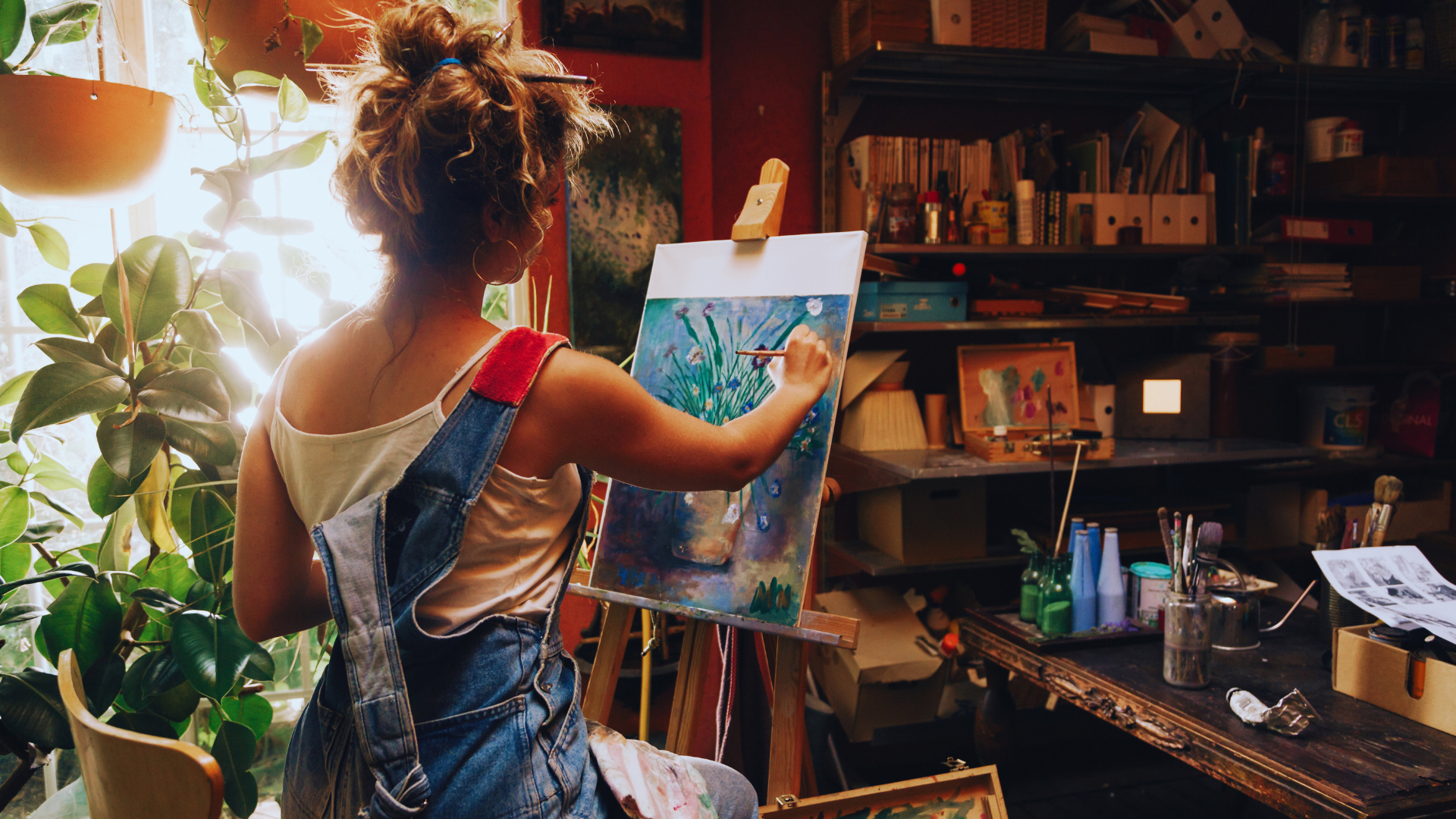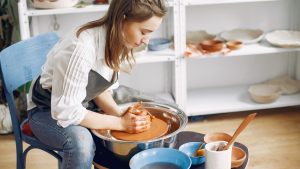Art has long been recognized as a powerful form of expression, yet its therapeutic benefits often extend beyond mere creativity. Engaging in the process of creating art can significantly enhance mental health and overall well-being. Art therapy has been shown to reduce anxiety, improve mood, and foster self-awareness, making it an effective tool for individuals seeking emotional healing.
Many people find that the act of creating—whether through painting, drawing, or sculpting—serves as a therapeutic outlet. It encourages self-expression and can provide relief from stress and negative emotions. This creative process allows individuals to explore their feelings and thoughts in a safe and constructive manner.
Moreover, art creation not only nurtures creativity but also promotes mindfulness. As individuals immerse themselves in their artwork, they often experience a meditative state that helps cultivate a sense of calm and focus. By recognizing the value of art in emotional healing, individuals can better navigate their mental health journeys.
Understanding Art Therapy
Art therapy combines creativity and psychology to foster healing and self-discovery. It allows individuals to express emotions and thoughts through artistic means, offering various benefits to mental health.
Historical Evolution and Approaches
Art therapy has roots dating back to the early 20th century. Pioneers like Margaret Naumburg and Edith Kramer emphasized the importance of artistic expression in emotional healing. Initially used in mental hospitals, the field has evolved significantly.
Today, art therapy encompasses various approaches, including psychodynamic, cognitive-behavioral, and humanistic methods. Each framework guides therapists in using art to address mental health issues like trauma, anxiety, and depression. Practitioners may integrate techniques from other fields, such as music therapy or expressive therapy, to enhance therapeutic outcomes.
The Art Therapy Process
The art therapy process involves several stages. Assessment is the first step, where the therapist gathers information about the individual’s background and emotional state. This helps in creating a tailored approach.
During sessions, clients engage in activities such as painting, drawing, or sculpting. They explore their feelings through their art, which can be more effective than verbal communication alone.
Therapists facilitate discussions around the created artwork, encouraging reflection on emotions and experiences. This dialogue is vital for personal insight and growth, aiding the healing journey.
Art Forms in Therapy
Various art forms are used in therapy, each with unique benefits. Drawing and painting allow for spontaneous expression of thoughts and feelings, often revealing inner emotions.
Sculpting offers a tactile experience, which can be grounding and calming. It allows for physical interaction with materials, promoting a sense of control.
Music therapy can be integrated for enhancing emotional expression, as creating or listening to music can evoke strong feelings. Each medium serves distinct purposes, catering to individual preferences and therapeutic needs.
Psychological and Emotional Impacts
Creating art significantly influences psychological and emotional well-being. It enhances cognitive function, supports mental health, and promotes emotional healing and self-awareness.
Enhancing Cognitive Function and Memory
Engaging in artistic activities can stimulate the brain, leading to improved cognitive function. Research indicates that creating art utilizes various parts of the brain, enhancing neural connections. These activities encourage problem-solving and creativity, essential for cognitive development.
Art-making also aids in memory retention. The process of creating requires one to recall techniques and concepts, which strengthens memory pathways. For individuals experiencing cognitive decline or memory issues, art can provide a meaningful exercise to maintain brain function.
Improving Mental Health Conditions
Art therapy serves as a beneficial approach for those struggling with mental health conditions such as anxiety and depression. Creating art allows individuals to express feelings that may be difficult to verbalize. This process can facilitate emotional release, reducing symptoms associated with these conditions.
Studies show that engaging in art can lower cortisol levels, thereby alleviating stress and anxiety. For individuals facing trauma, the therapeutic act of creating enables them to work through their experiences in a safe environment. Through visualization and expression, they can find relief and comfort.
Fostering Emotional Healing and Self-Awareness
Art encourages emotional healing by providing an outlet for self-expression. Creating art allows individuals to explore and confront their feelings, leading to greater self-awareness. This can be particularly beneficial for those dealing with grief or end-of-life care.
By visualizing emotions on canvas or paper, individuals can gain insights into their mental states. This process fosters introspection, enabling them to recognize patterns and triggers in emotional health. As a result, they can develop coping strategies and enhance their emotional well-being.
Social and Community Benefits
Creating art offers significant social and community advantages. Engagement in artistic activities can foster social connections, diminish feelings of loneliness, and promote collaboration in community settings.
Building Social Connections and Skills
Art serves as a powerful medium for forging social connections. Participating in art classes or workshops allows individuals to meet others with shared interests. This interaction can enhance communication skills and nurture relationships.
Group projects can further develop collaboration skills. Working alongside others encourages sharing ideas and constructive feedback. Such partnerships often result in stronger social networks that extend beyond the art space.
Reducing Loneliness and Isolation
Loneliness and social isolation can be detrimental to mental health. Art provides an excellent outlet for self-expression that can combat these feelings. When people engage in artistic endeavors, they often feel a sense of belonging.
Community art programs can provide targeted support to those experiencing isolation. By connecting individuals with similar backgrounds or interests, these programs create inclusive environments. These gatherings can reinforce the message that no one has to navigate their experiences alone.
Art in Group and Community Settings
Art activities are increasingly integrated into group and community settings. These environments promote social interaction and can serve therapeutic purposes. Group therapy, featuring art, allows participants to express their thoughts and emotions visually.
Community art projects can also mobilize groups towards common goals. Through collaboration on murals or sculptures, participants strengthen their relationships. This teamwork fosters a sense of accomplishment and pride within the community.
In summary, art functions as a bridge between people, facilitating connections and nurturing a sense of community, thus alleviating loneliness and isolation while enhancing social skills.
Physical Health and Quality of Life
Engaging in creative activities has significant impacts on both physical health and the overall quality of life. Through art, individuals can experience stress relief while also improving their independence and well-being, especially among older adults.
Stress Relief and Relaxation
Creating art serves as an effective outlet for stress relief and encourages relaxation. The act of focusing on creative expression can lower cortisol levels, which helps to diminish anxiety.
Studies show that individuals involved in artistic activities experience enhanced feelings of peace and satisfaction. Techniques such as painting, drawing, or even crafting can distract from daily stressors and promote mindfulness.
This mental engagement helps individuals to better cope with their emotions, leading to improved overall health. Engaging in art also fosters a sense of accomplishment, further contributing to one’s mental clarity and serenity.
Enhancing Physical Health and Independence
Art can significantly enhance physical health, particularly among those with limited mobility. Creative activities encourage fine motor skills and coordination through processes like painting or sculpting.
For individuals facing physical challenges, art can provide a means to express feelings and communicate desires. This can foster a sense of independence and empowerment, helping to combat feelings of helplessness.
Additionally, engaging in these activities often encourages mobility and movement, which may aid in reducing the risk of cognitive decline. As individuals create, they are simultaneously stimulating both body and mind.
Improvement in Quality of Life for Older Adults
For older adults, engaging in art can lead to considerable improvements in quality of life. Creative activities help to combat isolation, a common issue among seniors, by providing social interaction and community engagement.
Art can stimulate cognitive functions, aiding in memory recall and reducing the risk of dementia. Engaging in artistic endeavors may help maintain mental acuity by challenging the brain, thereby promoting neural connections.
Moreover, the joy and satisfaction derived from creating art can enhance well-being and foster a positive outlook on life. Creative expression equips older adults with tools to cope with emotions and confront the challenges of aging, ultimately enriching their lives.




